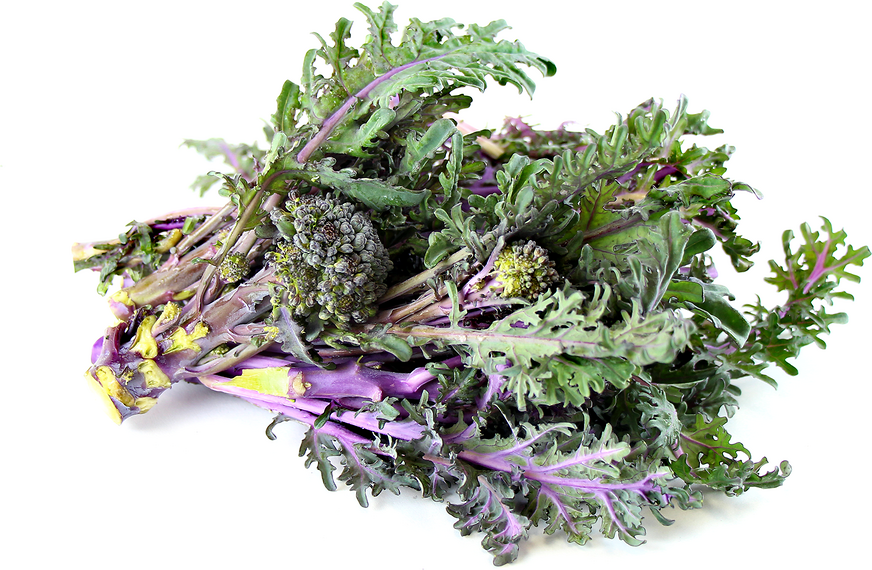


Purple Peacock Broccoli
Estimated Inventory, bunch : 0
Description/Taste
Purple Peacock broccoli has wrinkled, deeply serrated, frilly leaves, that are dark blue green with vibrant purple veins and stems. The leaves range in size from 20 to 30 centimeters. The plant does not produce a central head, instead it produces an abundance of loose heads with purple and dark green florets around 2 to 3 centimeters in diameter. The florets and smaller, younger leaves are tender and offer a slightly bitter, sweet flavor.
Seasons/Availability
Purple Peacock broccoli is available year-round.
Current Facts
Purple Peacock broccoli is a non-heading, hybrid variety of Brassica oleracea. It is a cross between green goliath broccoli and two colorful kale varieties, and offers crisp, kale-like leaves and small, tender florets. The open pollinated variety has leaves that most closely resemble red Russian kale and produces tons of small, tender side shoots. Purple Peacock broccoli is not available commercially or on a wide scale.
Nutritional Value
Purple Peacock broccoli is an excellent source of vitamins C, K and A, and the phytonutrients lutein-zeaxanthin and beta-carotene, which provide beneficial antioxidant and anti-inflammatory benefits. It is a good source of potassium, dietary fiber, folates, B-complex vitamins, manganese, magnesium, calcium, iron, copper and zinc. The bright purple pigment comes from anthocyanin, another powerful antioxidant.
Applications
Purple Peacock broccoli leaves and small sprouting heads are tender and sweet enough to be used raw in many culinary applications when young. They can be tossed with a light vinaigrette and served as a salad or lightly blanched or sautéed for a side dish. When the leaves are older, they can be cooked similarly to kale. Both the leaves and florets will cook to a dark green color. Use Purple Peacock broccoli in any recipe calling for broccoli. Chop the florets and leaves and add to pastas or sauté with garlic and oil and add to grain salads. The florets can be baked, roasted, blanched, braised or sautéed. Store them in the refrigerator for up to 5 days. Blanched Purple Peacock broccoli can be frozen for up to 3 months.
Ethnic/Cultural Info
There are many hybrid broccoli and kale varieties available through seed catalogs and online sellers. Each variety is bred naturally, through a process of selection that can take more than ten years depending on the variety. Plants are selected based on qualities such as appearance, taste, disease resistance and heat resistance. Open-pollinated, hybrid vareiteis such as Purple Peacock broccoli are highly variable, meaning plants may look very different from each other in terms of growing habit and yield.
Geography/History
Purple Peacock broccoli was selected and bred by Frank Morton of Wild Garden Seed in Philomath, Oregon. The hybrid variety was released in the early 2010s and quickly became popular with home gardeners and restaurant chefs. Seed companies have grown it with highly variable results, and it is available through online seed catalogs. Smaller, family farms have been growing Purple Peacock broccoli since 2014 in the United States and more recently in Canada and Australia. The colorful variety is also popular with home growers for its edible and ornamental qualities. The cold weather annual is best suited for cold winter climates but will grow in areas where the winters are mild. Purple Peacock broccoli may be spotted at farmer’s markets and in home gardens.




